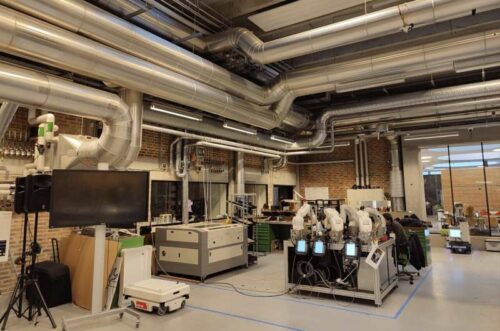This research helps mitigate network saturation risks and improve wireless communication, paving the way for advanced applications like robotic surgery and virtual reality.

Researchers from the Smart and Wireless Applications and Technologies Group (SWAT-UGR) have conducted studies to understand electromagnetic wave propagation. This research aims to enhance 5G and 6G network deployment and contribute to Industry 4.0, which focuses on automating factory processes using wireless technologies.
The first study, published in IEEE Transactions on Wireless Communications, addresses estimating two parameters that characterize electromagnetic waves: the angle and time of arrival of signals. The team employs toroidal arrays, a sensor geometry, to achieve this. The second study explores how electromagnetic waves propagate in industrial environments, examining how they are affected by such scenarios.The second study, published in IEEE Transactions on Vehicular Technology, focuses on industrial environments where waves encounter obstacles like heavy machinery. This work analyzes millimeter wave propagation in factories, aiming to improve wireless network performance. This research was conducted at the 5G Smart Production Lab at Aalborg University, a European laboratory deploying the latest Industry 4.0 technologies.
Addressing Saturation Risks
Both studies focus on millimetre waves, which carry information for telecommunications services like mobile networks or Wi-Fi. Currently, these services operate in frequency bands below 6 GHz. However, these networks face saturation risks with the exponential growth of users and devices. One proposal for 5G and 6G technologies is to deploy services in higher-frequency bands, leading to increased network speed and more stable connections, enabling possibilities like robotic surgery and virtual reality services.
Future applications from these investigations include enhancing 5G and 6G network deployment. The results, obtained using toroidal arrays, offer insights into the propagation channel and wave travel. The 5G Smart Production Lab study provides guidelines for telecommunications network deployments in industrial environments, contributing to the development of Industry 4.0. The goal is to automate factory production processes using wireless means. “Understanding wave propagation in new frequency bands is crucial before expanding our networks,” explains Alejandro Ramírez Arroyo, the lead UGR researcher. “For instance, wave propagation differs across the sea and between city buildings.”References: Alejandro Ramírez-Arroyo et al, Joint Ultra-wideband Characterization of Azimuth, Elevation and Time of Arrival with Toric Arrays, IEEE Transactions on Wireless Communications (2024). DOI: 10.1109/TWC.2024.3377539, Alejandro Ramírez-Arroyo et al, FR2 5G Networks for Industrial Scenarios: Experimental Characterization and Beam Management Procedures in Operational Conditions, IEEE Transactions on Vehicular Technology (2024). DOI: 10.1109/TVT.2024.3393533






